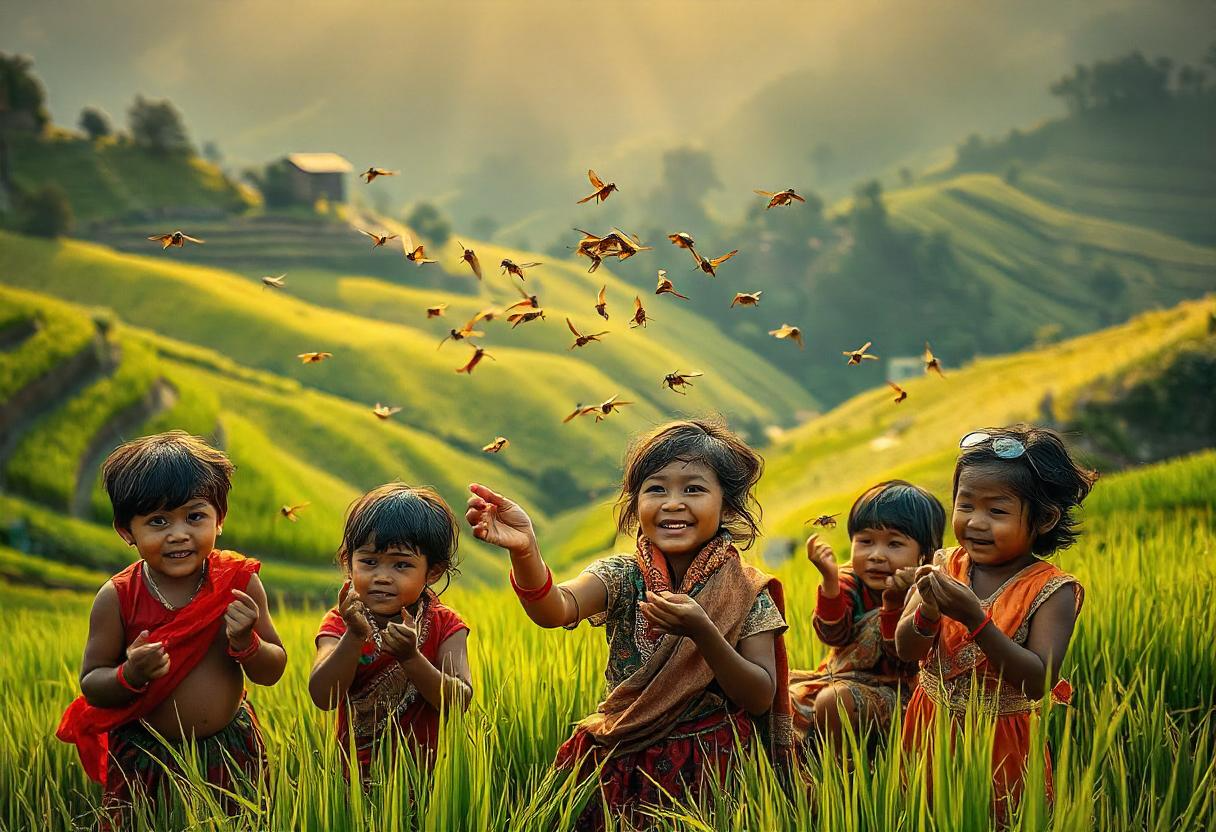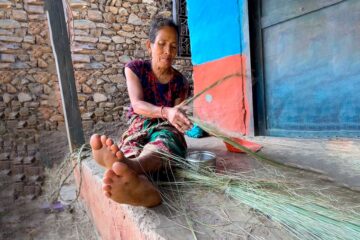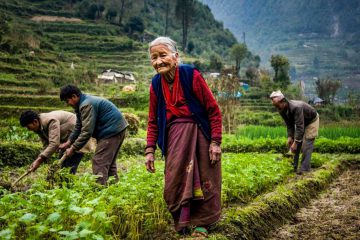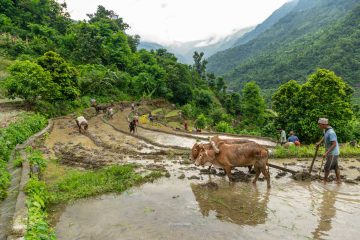Chizmirey, known as Alate or Flying Termite (reproductive stage termite) in English, is the favorite bait for traditional fishing in the rivers of Nepal.
These insects come out of the nest in the evening, after sunset and before dark.
From a seasonal perspective, termite swarms generally occur during spring or summer, with some species swarming as early as February and as late as November. Meteorologically, flying termites often appear after rain when the air is calm. Most termite species swarm during the day, while only a few species are known to swarm at night.
And mostly kids go out in the fields to catch them so that they can sell them to the fisherman and earn pocket money which they can later use to buy books, copies, pens and lunch at school.
The pricing for it is Rs 1,000 for 1 Mana (Traditional Measuring System of Nepal measured by a fixed pot). So it’s lucrative to kids and after school kids rush to the fields during the season of flying Chizmirey in villages of Nepal.
Also personally I feel it is healthier than watching mobile phones at home. At least kids know what these insects are, how they can be used, season and time of catching them and also they learn to collaborate and be physically as well as analytically (where they can get more) strong. Also learn to store them before selling and later negotiate while selling.
Apart from selling it to fishermen, they’re also favorite snacks for the birds. So, when the insects start coming out from the nest, the birds also come out and hunt while flying. It’s so great to know about varieties of birds and their hunting techniques.
Hunting Birds with Chizmirey
Along with fishing, people also used Chizmirey to hunt birds with Catapults and Leeso.
First, When birds came out to hunt Chizmirey, skilled hunters used catapults to kill the birds for food by shooting flying birds.
Second, people used sticky sticks called Leeso to catch the birds for food. This technique required patience as the hunter had to wait for the birds to get stuck on the Leeso.
In this technique, hunters had to make the Leeso (Sticky Stick) from resin and also catch Chizmirey. Then go into the forest and find a spot where birds usually hang out. There they set the trap with Leeso by making a fake branch of Leeso and in the middle stick the Chizmirey. And when birds come to eat Chizmirey, their wings get caught on the Leeso and the hunter catches the bird with hand.
But with the kids moving to cities, and varieties of factory manufactured available with ease, this technique of catching birds with Leeso for food is no longer practiced.
In Summary
The article provides a rich picture of lifestyle and child development in rural Nepali villages, highlighting several key aspects:
A. Lifestyle:
Close Connection to Nature:
- Daily life is deeply intertwined with the natural environment, with activities like fishing and bird hunting being essential.
- People possess a detailed understanding of local ecology, including insect behavior, seasonal patterns, and bird habits.
Traditional Practices:
- Traditional methods of fishing and hunting are still prevalent, showcasing the preservation of cultural heritage.
- The use of “Mana” as a traditional measurement system reflects reliance on age-old practices.
Resourcefulness and Self-Sufficiency:
- Villagers utilize available resources, like flying termites, for multiple purposes (fishing bait, bird hunting).
- They demonstrate resourcefulness in crafting tools like “Leeso” from natural materials.
Seasonal Dependence:
- Activities are often dictated by seasonal changes, with the availability of flying termites influencing fishing and bird hunting.
Community and Collaboration:
- Children work together to gather the termites, showcasing the importance of community and collaborative effort.
B. Child Development:
Practical Skills and Knowledge:
- Children acquire valuable practical skills, such as insect identification, catching techniques, and negotiation.
- They gain knowledge about the natural world, including insect and bird behavior.
Economic Contribution:
- Children contribute to the family income by selling flying termites, fostering a sense of responsibility and financial awareness.
- This also enables them to gain money for school supplies and lunch.
Physical Activity and Outdoor Engagement:
- Children spend time outdoors, engaging in physical activities, promoting healthy development.
- This is a stark contrast to the sedentary lifestyle associated with excessive screen time.
Social Development:
- Collaborative activities promote social interaction, teamwork, and communication skills.
- They learn to negotiate with buyers, enhancing their social and interpersonal skills.
Analytical Thinking:
- Children develop analytical skills by assessing where they can find the most termites.
Responsibility:
- They learn how to properly store the insects so they don’t spoil before they are sold.
Connection to food source:
- Children are very aware of where food comes from, either from the river or from the birds that they hunt.
In essence, childhood in these rural villages is characterized by a close connection to nature, practical skill development, and a strong sense of community, contributing to well-rounded development.
Chizmirey (The Flying Termites)
Chizmirey or The Flying Termites are the only termites capable of reproduction. And their only purpose is to find a new nest (colony site) and ensure that the new queen can start producing eggs.
Finally when the flying termite (Chizmirey) finds its place, it loses its wings and becomes a King or Queen termite, depending on gender.




